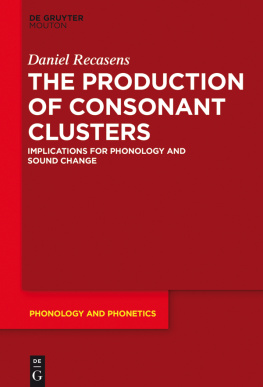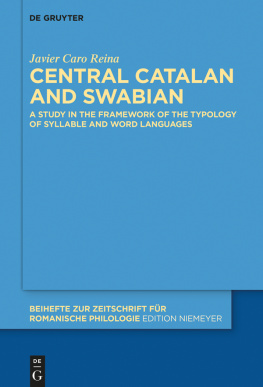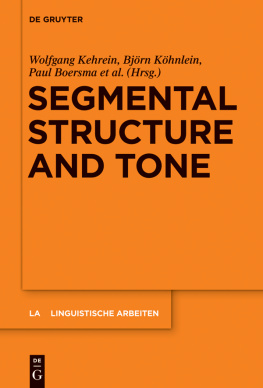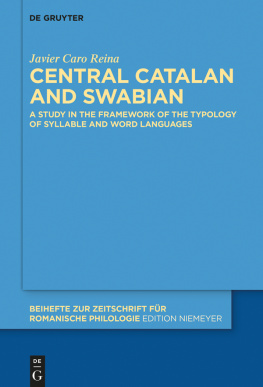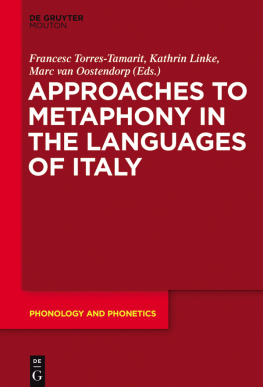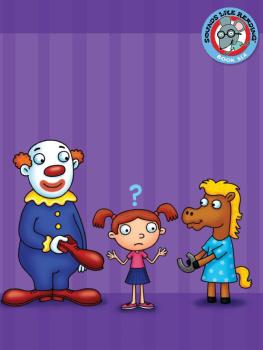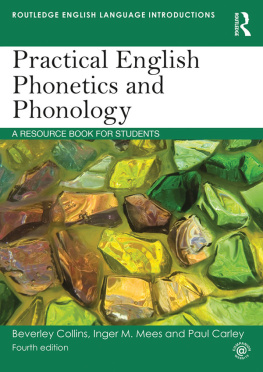Table of contents
Guide

Daniel Recasens
The Production of Consonant Clusters
Phonology and Phonetics

Editor
Aditi Lahiri
Volume 26

ISBN 978-3-11-056567-6
e-ISBN (PDF) 978-3-11-056805-9
e-ISBN (EPUB) 978-3-11-056572-0
ISSN 1861-4191
Library of Congress Cataloging-in-Publication Data
A CIP catalog record for this book has been applied for at the Library of Congress.
Bibliographic information published by the Deutsche Nationalbibliothek
The Deutsche Nationalbibliothek lists this publication in the Deutsche Nationalbibliografie; detailed bibliographic data are available on the Internet at http://dnb.dnb.de.
2018 Walter de Gruyter GmbH, Berlin/Boston
www.degruyter.com
1Introduction
The phonetic realization of consonant clusters presents a challenge for studies on speech production. Differently from segmental sequences composed of vowels and consonants, the realization of consonant sequences offers a large variety of production scenarios which speakers may resolve through an array of articulatory mechanisms. These mechanisms are conditioned by the need to implement the place and manner of articulation and voicing characteristics for the consecutive consonants and may result in highly antagonistic situations. For example, in a sequence like /r/ which may be found in the Catalan string bany rus Russian bath, where / / is an alveolopalatal nasal and /r/ is an alveolar trill, the need to anticipate the tongue body lowering and backing movement for the trill conflicts necessarily with the raised and fronted tongue body configuration for the preceding alveolopalatal nasal. Articulatory data show that speakers often solve this antagonistic situation by depalatalizing C1 rather than by palatalizing C2. There is no conflict in other consonant sequences where the lingual activity for C1 is more compatible with that for C2 as, for example, in the case of /n/ where the tongue body raising and fronting movement for // is freely anticipated during the preceding alveolar nasal since the production of /n/ does not require a very precise lingual configuration partly due to the low manner of articulation-dependent production demands involved (see ).
A good reason for investigating the production mechanisms of consonant clusters is in order to be able to account for why certain consonant-to-consonant adaptations in place and manner of articulation take place more often than others. A production-motivated rationale for why these articulatory adaptations occur the way they do appears to be more acceptable than other approaches based on phonological principles such as the strength hierarchy, which runs opposite to the sonority hierarchy and proceeds in the progression stops (consonants with maximal strength) > fricatives > nasals > laterals > rhotics (consonants with minimal strength). According to this view, a CC syllable contact is favoured the higher the strength value of onset C2 relative to that of coda C1, and assimilation causes the stronger consonant to become less strong. Therefore, it is predicted that /ln/ and /rn/ should assimilate progressively into [ll] and [rr], respectively, while /nl/ and /nr/ ought to assimilate regressively into the same phonetic outcomes [ll] and [rr] (Maiden, 1995: 72, Vennemann, 1988: 5051). A problem with this and similar hierarchies is that strength values are not independently motivated but are derived from the outcomes of the phonological and sound change processes themselves, which may lead to different hierarchies, especially among sonorant consonants, depending on which process is subject to analysis (see for a similar objection Cho, 1999: 205211). Thus, for example, ). Another problem with manner categories such as stop, fricative, nasal, lateral and rhotic is that they are far too general for making valid predictions about the range of adaptability processes which may apply to consonant sequences such as the ones analyzed in the present study. For instance, under the label rhotic we find manner classes as different as taps, trills and approximants, which operate very differently as coarticulation and assimilation triggers and targets, and a similar objection may be made regarding differences in adaptability between stops and nasals depending on the primary articulator and thus whether they are coronal or dorsal.
A similar criticism may be raised with respect to other phonological models based on features or gestures which consider place and manner of articulation characteristics independently of each other or attribute more relevance to gestural goals than to manner of articulation demands. Throughout this book we generally render consonantal assimilations dependent on the articulatory and aerodynamic requirements involved in the production of the two successive consonants in consonant clusters. The rationale behind this approach is that, in a good number of cases, place and manner of articulation properties account jointly for whether specific assimilatory processes apply or not.
A large number of recent studies on the realization of word-initial and word-final consonant sequences have tested several predictions about gestural overlap and articulatory cohesion at the syllable level formulated by Articulatory Phonology (Browman & Goldstein, 1992). Within this and other frameworks, much attention has been paid to the mechanisms of interarticulatory coordination for successive consonants produced with independent articulatory structures which may overlap in time, i.e., lips, jaw, tongue, velum and larynx, and tongue front and tongue body as well. The present book reviews citically the existing literature on the production of these two-consonant cluster structures, and provides some new insigths about the articulatory organization of heterosyllabic sequences which are (nearly)-homorganic and thus composed of consonants sharing essentially the same primary articulator. Moreover, it does not only deal with the place adaptation mechanisms between the two consonants in the cluster, but also with how the homorganic or heterorganic relationship between C1 and C2 as well as other articulatory and aerodynamic characteristics influence the implementation of manner assimilations (see segmental insertions which may result from changes in glottal or articulatory timing between the consonants in succession.
A main goal of the present investigation is to show that attention to phonetic detail may contribute to unveil the causes of specific intersegmental adaptation processes. Sometimes what appears to be a categorical assimilation to the ear is not intended as such by the speaker. Even though in we treat as categorical several apparently complete place and manner assimilations occurring in /sC/ and /rC/ sequences with a voiced or sonorant C2, we are aware that they often are not. Experimental research reveals that speakers may produce these consonant sequences through several C1 phonetic realizations which have been generated through different degrees of articulatory reduction and regressive adaptation. We believe that to the extent that these production mechanisms operate on certain coda consonants and consonant sequences rather than others, they ought to be modelled and accounted for by theories of phonology and sound change.

